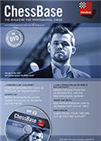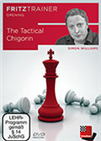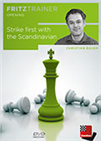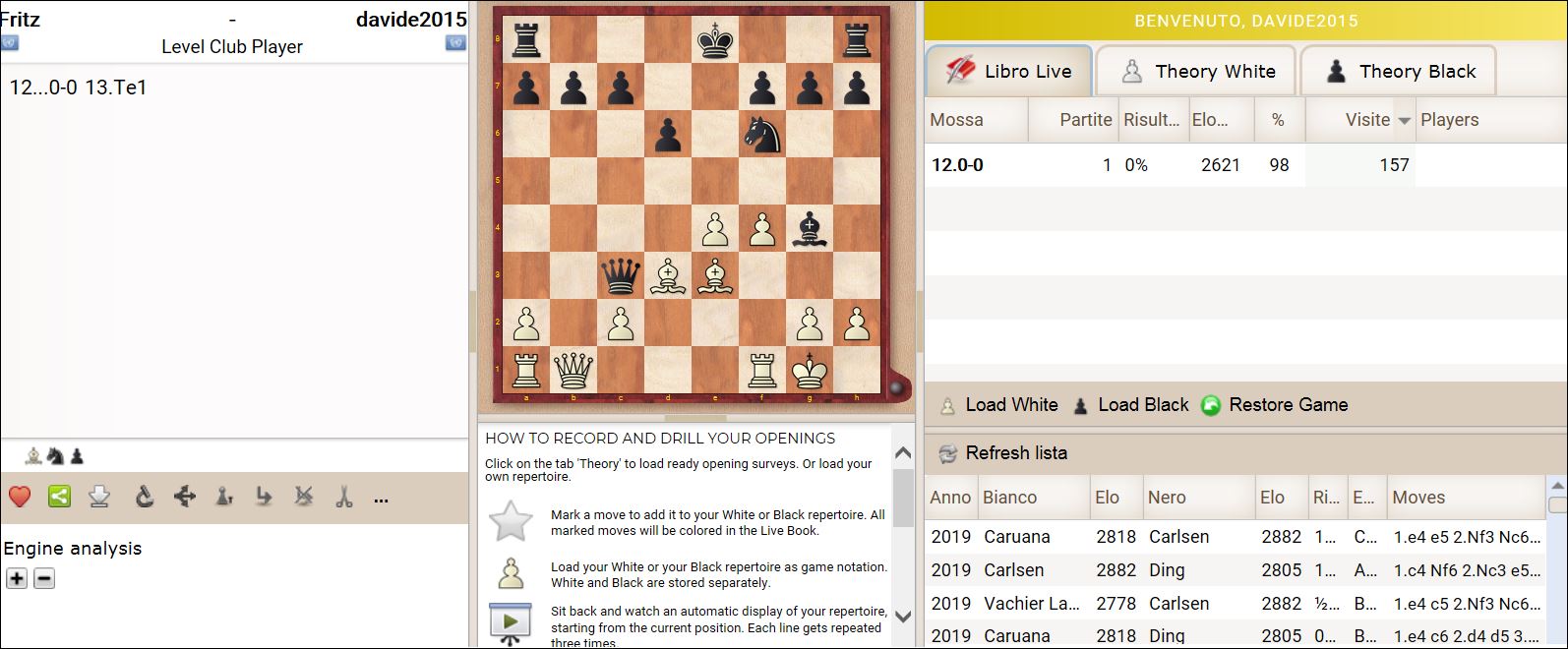Memorization is not real knowledge
When I began reviewing this FritzTrainer, I was expecting just a new move or a new interpretation of the Nimzowitsch Defence. After all, the engines have revolutionized and changed the way humans handle a number of openings.
Instead, after working on it for a few hours, I realized I was witnessing a paradigm shift. Yes, in the past, masters like Petrosian, Fischer or Spassky had their repertoire chiselled in stone, with some of them all but carving it on precious marble! But in this video series I witnessed the total fluidity of modern times — something that cannot be comprehended and fully appreciated without having put in the effort to improve one's level of chess understanding for long years and thousands of hours, something that is clearly beyond the grasp of the layman who is just entering the chess world or watching it from time to time.
We hear the argument that games should be played more quickly in order to elicit interest from a larger audience. But while studying these videos, trying to gather a sample of games coming out from 1...♞c6 for the readers, I found myself exploring a dozen openings that had nothing to do with a pure Nimzowitsch Defence! I saw how an Iranian player entered the Four Knights and avoided the Ruy Lopez, I enjoyed different types of Scandinavians, gasped at the ease with which Carlsen dispatched opponents using 1...♞c6 while entering a Pirc/Modern, and so on and so forth. All these explorations over the chess board made me think of the first verses of the Tao Te Ching (forgive my faulty memory): "The Tao which can be told is not the eternal Tao". And here comes the analogy: "Chess knowledge which comes from mere memorization is not real knowledge".
On the other hand, the knowledge we get from this FritzTrainer is mastery at work, the knowledge behind the mere moves...the elusive world of opening ideas. Some openings we have already studied can be reached through different move orders, using 1...♞c6 as the key.
Having this mindset makes even more sense if we take into account how modern chess players participate in a larger amount of tournaments compared to the past, some of them with vastly different time controls. Hence, the need to create additional repertoires for rapid and blitz.
Bauer begins the video series analysing the pros and cons of different opening moves: 1.e4 d6 or ...g6, i.e. the Pirc/Modern, and of course 1...♞c6, the topic of the DVD. For example, after the moves 1.e4 d6 2.d4 ♞f6 3.♘c3 g6...
 Scarcely any world champion has managed to captivate chess lovers to the extent Carlsen has. The enormously talented Norwegian hasn't been systematically trained within the structures of a major chess-playing nation such as Russia, the Ukraine or China.
Scarcely any world champion has managed to captivate chess lovers to the extent Carlsen has. The enormously talented Norwegian hasn't been systematically trained within the structures of a major chess-playing nation such as Russia, the Ukraine or China.
...there are now many possibilities for White: 4.f4, 4.♗g5 and 4.♗e3.
Bauer tries to convey the point that it is quite difficult to predict White's preparation against the Pirc, which means we need to be well-prepared theoretically. While if we play 1...♞c6 instead, we are the ones dictating the rules to a certain extent. He shows the following line, which avoids the Four Pawns Attack of the Pirc: 1.e4 ♞c6 2.♘f3 d6 3.d4 ♞f6 4.♘c3 g6.
If one is impatient and wants to know right away what lines will be treated in the DVD, it is possible to immediately jump to the "synopsis" video, in which Bauer gives a detailed description of each one.
Thanks to the different transpositions and move orders shown by Bauer in the synopsis, I found pawn structures I like and know how to handle, such as the one coming out from: 1.e4 ♞c6 2.d4 d5 3.exd5 ♛xd5 4.♘f3 — here Bauer recommends 4...e5 instead of the more popular ...♝g4:
 Analyses by Caruana, Giri, So, Vidit, Wojtaszek, Gelfand, McShane, Yu Yangyi, Nielsen, the Muzychuk sisters and many more. Plus videos by King, Sokolov and Williams. 11 opening articles with new ideas for your repertoire plus lots of training sessions!
Analyses by Caruana, Giri, So, Vidit, Wojtaszek, Gelfand, McShane, Yu Yangyi, Nielsen, the Muzychuk sisters and many more. Plus videos by King, Sokolov and Williams. 11 opening articles with new ideas for your repertoire plus lots of training sessions!
But Bauer also shows some less known variations. I definitely do not like a few of them, but I still tried them, the same way I would try a new food that I had never eaten before. The idea is to get a better understanding of the system and grow as a chess player. Obviously, I would not use any of these in a tournament game right away, but thanks to Bauer I came to know more about what kind of player I am.

Nonetheless, the different openings on display are routinely used by the best players on the planet. For example, a quick search in the ChessBase live database shows hundreds of games, and some recurrent well-known names. Take a look at these five games, which portray the richness of 1...♞c6, a move used by a large variety of players:
 Opening with the Chigorin shows your intention to play for a win right from the outset. After 2...Nc6 Black's pieces fly into the game putting pressure on White's position from a very early stage. This opening is ideal for the type of player who strives for an unconvential yet attacking game right from the start.
Opening with the Chigorin shows your intention to play for a win right from the outset. After 2...Nc6 Black's pieces fly into the game putting pressure on White's position from a very early stage. This opening is ideal for the type of player who strives for an unconvential yet attacking game right from the start.Let me get back to the review of the FritzTrainer. After the introductory video and the synopsis, there is a huge section of theory: fifteen videos in total. In this section, there is also a link to replay the Model Games — no less than 146 encounters.
After the theory section — much like at the end of a college semester — there is the test section, with thirteen clips, in which the interactive video format allows the viewer to play an active role in finding the right continuation to the positions presented by Bauer.
At that point, we see the new ChessBase training system at work. It begins with the Openings Trainer:

And then there is the Fritz App, in which you can try out the eleven main lines given by Bauer in the theoretical section against the analysis engine.

Pros and Cons
This opening repertoire is definitely not for everyone. A beginner might be baffled by positions which seem to contradict notorious chess rules. For example, after 1.e4 ♞c6 2.♘f3 d6 3.d4 ♞f6 4.d5 ♞e5 5.♘xe5 dxe5 6.♘c3 e6 7.♗b5 ♝d7 8.dxe6 fxe6...
...some players might not like the doubled e-pawns, as they have heard their coaches repeat once and again, "Doubled pawns are bad". However, some other players are willing to take up the challenge and play with that pawn structure in order to get a better understanding of the position.
The game cited by Bauer to justify this line ends up in a draw, but a casual observer could be tricked into thinking the draw was signed after 17 moves, which is not the case, as the game lasted about 39 moves. Also, both players were quite strong — White was a 2600+ player and Black had an Elo rating above 2500. One needs to discover whether it is possible to hold the position against an average player, the kind one encounters at weekend tournaments.
Here is the game for those who are curious. Notice how White attacks the backward weak pawn on e6 from time to time.
This opening also defies other chess laws frequently taught to beginners. For example, 1) you should not move the same piece twice or 2) find a good square for a piece and keep it there. Instead, in the lines described by Bauer, sometimes we jump backwards and not forwards, or we give up the centre with White. For instance, after 1.e4 ♞c6 2.♘f3 d6 3.d4 ♞f6 4.♘c3 g6 5.d5 we are supposed to go ♞b8:
 The Scandinavian is a rarely employed opening on the hightest level und guides your opponent on much less familiar terrain than for example the Sicilian, French or any 1.e4 e5 system. After 1.e4 d5 Black fights for the initiative from move one.
The Scandinavian is a rarely employed opening on the hightest level und guides your opponent on much less familiar terrain than for example the Sicilian, French or any 1.e4 e5 system. After 1.e4 d5 Black fights for the initiative from move one.
In the introductory video, Bauer proposed 1...♞c6 as a way to avoid the Four Pawns Attack of the Pirc/Modern, but then, in the synopsis video, 1.e4 ♞c6 2.d4 d5 3.♘c3 ♞f6 4.e5 ♞d7 5.f4 is proposed:
White has a space advantage and freedom to develop his pieces, while Black seems to be stuck with a bad version of the French Advance Variation...
The bottom line
This is a repertoire for advanced players who understand the positions they are getting into, lines they use in order to look for new ways to outplay the opponent's opening preparation. Many of the move orders shown by Bauer transpose into other openings, like the Scotch, and if one does not have experience handling them, this could become deadly in no time.
The pro is obvious: by being exposed to the large amount of pawn structures shown in this DVD, one can easily gain master-level knowledge and more flexible thought processes, while learning to adapt to different formations on the spot. If you are serious about chess improvement, you should definitely try out this DVD.
I am not sure whether this only happened to me, but my Opening Trainer was not working. I clicked on it and opened this position...

...but it did not include the moves from the beginning, which would have allowed me to drill myself into memorizing the starting sequence. It started from move 12, and I don't know why.
Editor's note: We've been unable to reproduce the reported behaviour. The Openings App is working as intended.
Playing against Fritz worked fine. And, of course, I can use ChessBase 14/15 to practice the moves with the training function built into the database program.
Final thoughts
Buying this DVD thinking that it will deliver an opening weapon that refutes all other openings is clearly a bad idea. If, instead, we tell ourselves, "I want to listen to a grandmaster explaining an opening I don't know, while doing some exercises and challenging the biases I have in my chess mind for a few hours", then this is definitely a must-have video series.
In my opinion, the set of lines given by Bauer are for the advanced tournament player, someone who already has his own opening repertoire and who has dabbled into many setups throughout years. This hypothetical player is now using a holistic approach in the opening, modifying his lines according to the tournament and the time control.
Links
.jpeg)






















